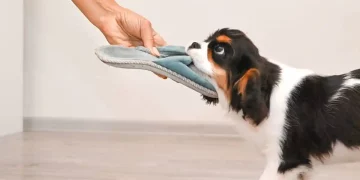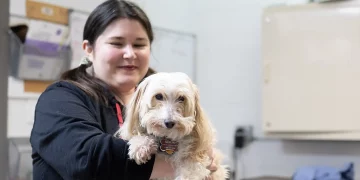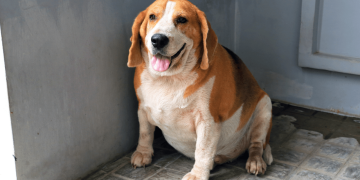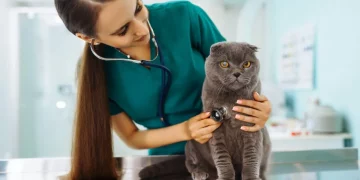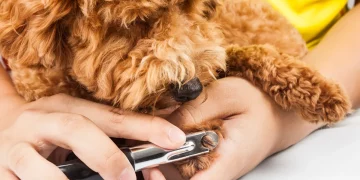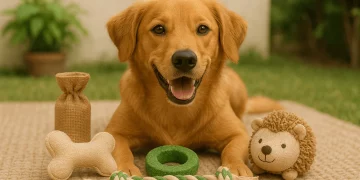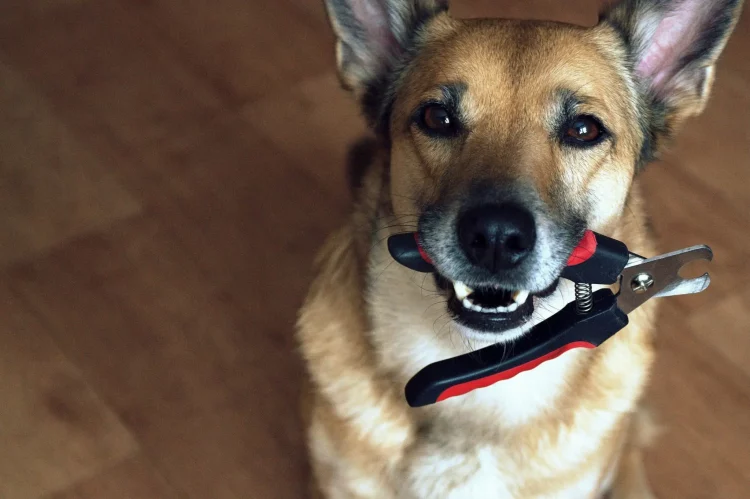Nail care is an often overlooked aspect of pet grooming, but it is just as important as keeping your pet’s coat and skin healthy. Regular nail trimming prevents overgrowth, which can lead to discomfort and health issues for your pet. Whether you have a dog, cat, or other pet, knowing how to trim their nails properly is essential to their overall well-being. This article will cover the do’s and don’ts of pet nail trimming, ensuring that both you and your pet stay safe and stress-free during the process.
1. Why Nail Care is Important for Pets
Before diving into the specifics of how to trim your pet’s nails, it’s important to understand why nail care matters. Neglecting regular nail trimming can result in several health problems:
1.1. Prevents Discomfort and Pain
Overgrown nails can curl into your pet’s paw pads, causing pain and potential infection. Long nails can also lead to difficulty walking, running, or playing, as the nails can get caught on surfaces and cause injury.
1.2. Protects Furniture and Floors
Long nails can be sharp and may scratch your floors, furniture, and even yourself. Regular trimming helps protect your home from these potential damages.
1.3. Prevents Deformities and Injury
If a pet’s nails grow too long, they can cause deformities or misalignment in their paws, leading to issues with posture and mobility. In extreme cases, overgrown nails may break or cause other injuries that require medical treatment.
1.4. Improves Comfort and Safety
Properly trimmed nails improve your pet’s comfort by ensuring they have better traction on hard surfaces, such as floors and outdoor paths. This reduces the risk of slipping and falling, especially in older pets or those with joint issues.
2. How Often Should You Trim Your Pet’s Nails?
The frequency of nail trimming depends on your pet’s activity level, breed, and nail growth rate. In general:
- Dogs: Dogs that go on regular walks or spend time outdoors may naturally wear down their nails. However, it’s still important to check their nails every 2–4 weeks and trim them as needed.
- Cats: Cats that spend time outdoors tend to wear down their nails naturally, but indoor cats may need more frequent trims. Aim for every 2–4 weeks.
- Small Pets: Small pets, like rabbits, guinea pigs, or ferrets, often need more frequent trimming because their nails don’t wear down naturally. Check their nails every 2–3 weeks.
3. The Do’s of Pet Nail Trimming
Proper nail care requires both the right tools and techniques. Here are the do’s of pet nail trimming to help you achieve the best results:
3.1. Do Use the Right Tools
The first step to successful nail trimming is selecting the appropriate tools for the job. There are various nail clippers available for pets, and using the right one can make the process smoother:
- Scissor-style clippers: Best for smaller pets with thinner nails.
- Guillotine-style clippers: Ideal for pets with thicker nails, especially dogs.
- Nail grinders: These tools smooth the edges of the nail after trimming and can be less stressful for pets who are anxious about clippers.
Make sure the clippers are sharp, clean, and in good working condition to prevent crushing or splintering your pet’s nails.
3.2. Do Trim Nails Gradually
It’s important not to trim your pet’s nails too short at once. Start by trimming a small amount from the tip of the nail, checking for the “quick” (the blood vessel inside the nail) as you go. For pets with clear nails, the quick is easily visible as a pinkish area inside the nail. For pets with dark nails, you may need to trim in small increments to avoid cutting into the quick.
3.3. Do Use Positive Reinforcement
Making nail trimming a positive experience for your pet is key to reducing stress. Reward your pet with praise, treats, and gentle affection throughout the process. If your pet becomes anxious or uncomfortable, take breaks, and resume when they are calmer. Positive reinforcement can help your pet associate nail trimming with good things.
3.4. Do Use a Nail File or Grinder After Clipping
After trimming the nails, use a nail file or grinder to smooth any sharp edges. This is particularly important for dogs who may scratch themselves or others after a trim. A grinder can also help reduce the risk of splitting or uneven nail cuts.
3.5. Do Be Patient and Gentle
If you’ve never trimmed your pet’s nails before, or if your pet is nervous about the process, take your time. Rushing through the process can cause stress for both you and your pet. Work slowly, be gentle, and give your pet plenty of breaks if needed.
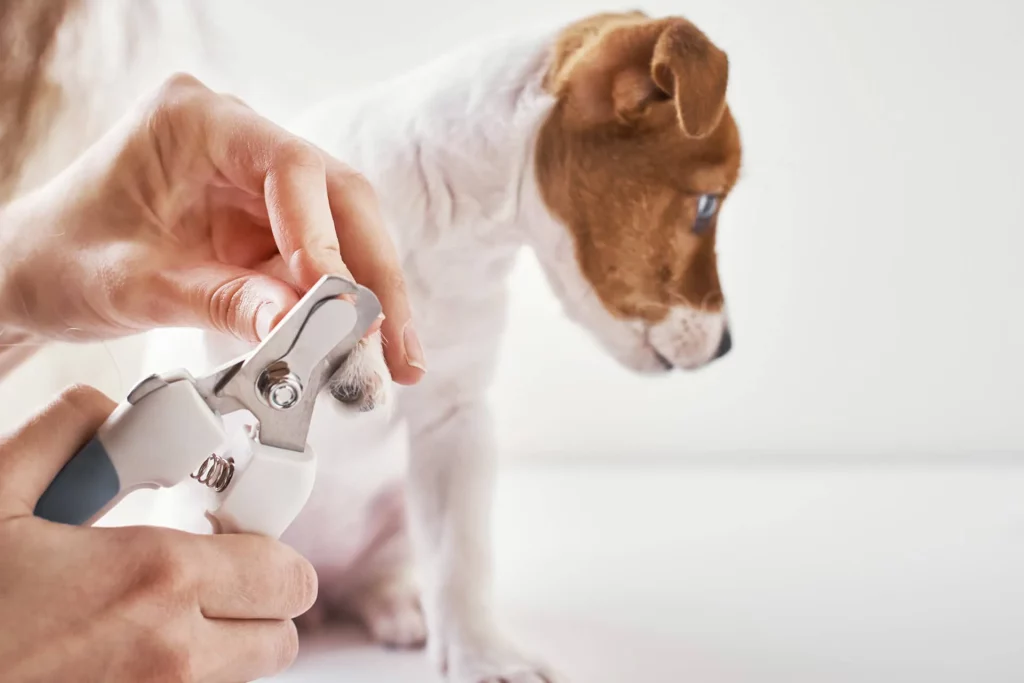
4. The Don’ts of Pet Nail Trimming
To ensure a successful and safe nail trimming experience, there are several common mistakes that you should avoid. Here are the don’ts of pet nail trimming:
4.1. Don’t Cut Too Close to the Quick
Cutting too close to the quick can be painful for your pet and may lead to bleeding. The quick is the sensitive blood vessel inside the nail, and if you accidentally clip it, it can cause discomfort or even an infection if not properly treated. If you’re unsure where the quick ends, trim small amounts at a time to be on the safe side.
4.2. Don’t Use Human Nail Clippers
Human nail clippers are not designed for animal nails, which are generally thicker and tougher than human nails. Using human clippers can cause the nail to splinter or break, which may cause injury to your pet. Always use clippers designed specifically for pets.
4.3. Don’t Trim Your Pet’s Nails When They Are Stressed or Agitated
Trying to trim your pet’s nails when they are stressed, anxious, or agitated can make the process more difficult and even dangerous. Your pet may jerk suddenly, causing you to accidentally cut too deeply. Wait until your pet is calm and relaxed before proceeding with the trim. If your pet is highly anxious, consider asking a professional groomer or veterinarian to assist.
4.4. Don’t Ignore Nail Health
Regular nail trimming is important, but it’s also important to check your pet’s nails for other issues, such as cracks, splits, or infections. If you notice any unusual symptoms—such as discoloration, swelling, or odor—seek advice from your veterinarian. These issues could indicate a nail injury or infection that requires medical attention.
4.5. Don’t Forget to Trim Dewclaws
Some pets, especially dogs, have dewclaws, which are located higher up on the leg, near the wrist. These nails often don’t wear down naturally and can become overgrown if not trimmed. Be sure to check your pet’s dewclaws and trim them regularly to prevent injury.
5. What to Do If You Cut the Quick
Even the most experienced pet owners occasionally cut the quick. If this happens, stay calm and act quickly:
- Apply Pressure: If bleeding occurs, apply gentle pressure to the nail with a clean cloth or gauze.
- Use Styptic Powder: Styptic powder or a styptic pencil can help stop the bleeding. Apply the powder directly to the tip of the nail where the bleeding is occurring.
- Stay Calm: Your pet will likely be startled by the sudden discomfort, so stay calm and reassure them. Give them a treat or some extra affection once the bleeding stops.
If the bleeding doesn’t stop within a few minutes or if you notice signs of infection, contact your veterinarian for further advice.
6. When to Seek Professional Help
If you are unsure about trimming your pet’s nails or your pet is particularly anxious about the process, it may be worth seeking professional help. Professional groomers and veterinarians are trained in safe nail trimming techniques and can provide assistance if needed. If your pet has health issues that affect their nails, such as arthritis or deformities, professional trimming may be a safer option.
7. Conclusion: Nail Care is Essential for Pet Health
Proper nail care is essential for your pet’s comfort and overall well-being. By following the do’s and don’ts of nail trimming, you can help ensure that your pet’s nails are trimmed safely and effectively, without causing them stress or injury. Remember to use the right tools, be patient, and make nail trimming a positive experience for your pet. If in doubt, consult a professional groomer or veterinarian to ensure your pet’s nails are in tip-top shape.


